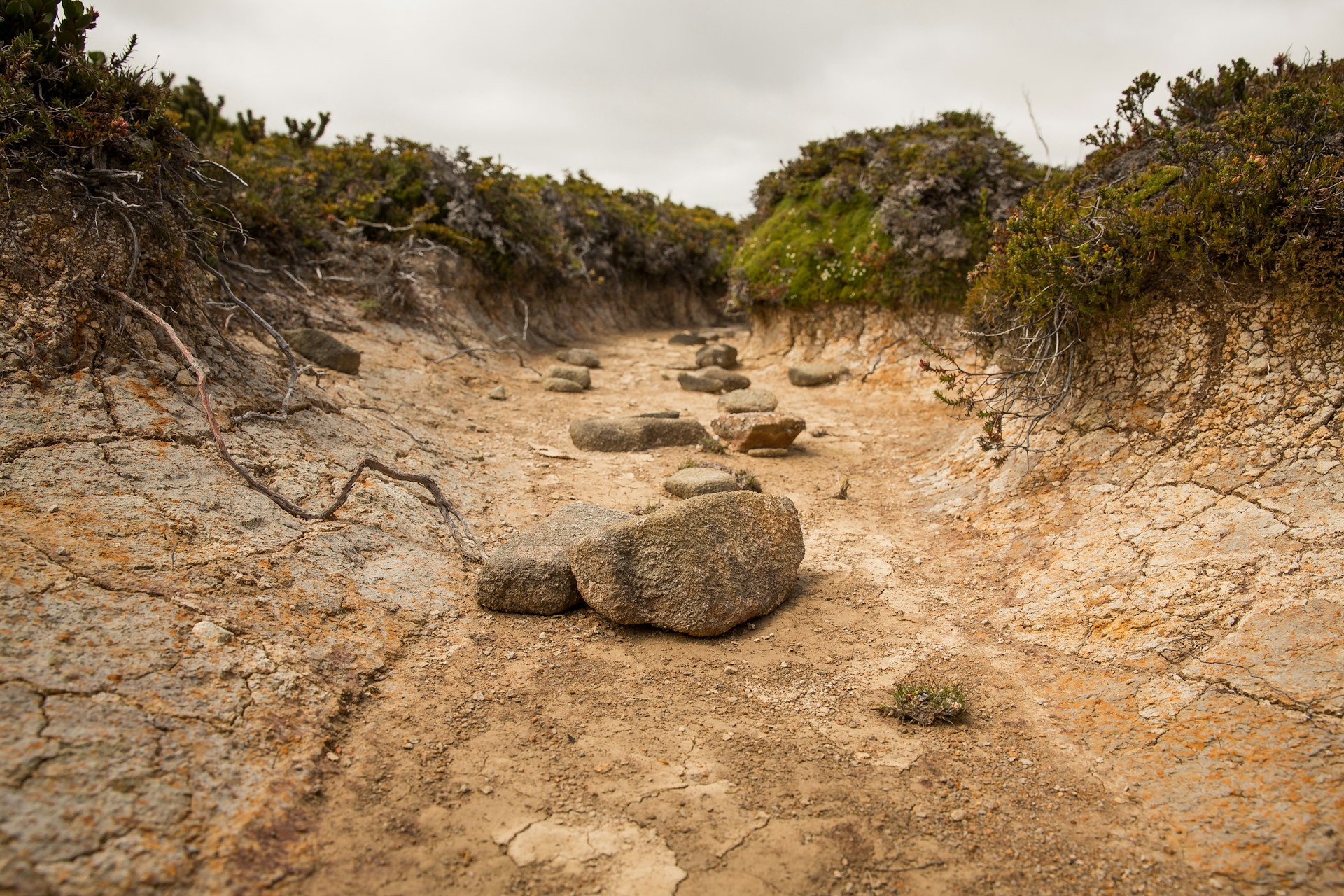Uncertainty and water management: preparing for the unknown

How do we deal with uncertainty when it comes to long-range climate forecasts and water management?
Late last year, GHD hosted a webinar series featuring water experts from across the sector to discuss how we can ensure water security and resilience for communities during record-breaking drought.
The first webinar in the series, What to expect when you’re expecting El Niño, included insights from Bureau of Meteorology General Manager Agriculture and Water Matthew Coulton on seasonal climate information, and a panel discussion with Victorian Environmental Water Holder CEO Dr. Sarina Loo and GHD North American Water Treatment and Desalination Lead Mark Donovan
At the time, an El Niño had recently been declared and many media reports were suggesting that meant a "hot and dry" summer ahead.
However, the Bureau of Meteorology's long-range forecast was suggesting something a bit different, with different forecasts for different parts of the country, and considerable uncertainty in many regions.
GHD Australian Market Leader for Water Lindsey Brown facilitated the webinar, which delved deep into Australia’s weather outlook and how the water sector can prepare for the uncertain conditions ahead.
“Most of us have read reports on what’s expected in the coming months. We are expecting very hot, dry conditions, particularly in the eastern states of Australia,” she said.
“There will be a clear increase in fire danger, extremely hot days and challenges for our communities, which also relates to water consumption and an increased pressure on our water supply.
“Given the water sector’s role in sustainable water management, we wanted to explore insights to inform our understanding of what to expect and how we can continue to make smart decisions while we are protecting water for the communities, the environment and our economy.
“As University of Sydney academic Stuart Khan mentioned in a recent article in The Conversation, when Australia last went into El Niño, we had water supply issues in Brisbane, Sydney, Canberra and Melbourne.
“Whereas now, after three years of La Niña, we’ve got a very different situation on our hands. At the moment, most of our reservoirs and storages are quite full. Is the situation now different?
“Hot, dry periods increase usage as well as evaporation, which could reduce those resources quickly, as well as drying soil conditions. So, after a few hot dry years in a row, we may see our storages drop faster than expected.
“We don’t have a crisis today, but will there be one soon? This is an important question.”
Climate contexts
Presenting on the climate and water outlook for Australia in coming months and what the outlook means practically for water managers, Coulton said how we interpret predicted dry and hot conditions all depends on what has come before.
“To understand the outlook, we need to understand where we have come from and the current state of the landscape, which is just as important as understanding our risks and our vulnerabilities,” he said.
“The 2017-2019 drought did not just break records, it smashed records in many places, particularly in the northern Murray-Darling Basin, both from a perspective of heat and low rainfall.
“Our catchments were really dry as a result of the drought. When our catchments get that dry, we need to get a significant amount of rain to re-wet the soil before you see that runoff.”
The change in conditions in the three years that followed the 2017-2019 drought resulted in wetter than average conditions across most of Australia, Coulton said – interestingly, it was incredibly wet in the areas that were incredibly dry three years prior.
“At the end of 2022, water storages were not just full but overflowing. One of the differences we noticed, compared to the end of 2017 when we had wetter than average conditions, was the improvement in groundwater levels,” he said.
“The wet period that occurred in 2016-17 was not wet for long enough to really make a meaningful difference to our groundwater systems. Whereas the wet conditions over the past three years have resulted in a very significant improvement to our groundwater systems.”
“At the end of 2023, the landscape in parts of southern Australia was similar to how it was at the end of 2019, with landscapes drying out. However, the big difference between the end of 2023 and 2019 is that water storages were still looking very healthy,” he said.
“While we look to be in a similar situation as 2019 in terms of drying soils, we have a very different scenario when it comes to storage levels and groundwater.”
The season ahead
“Our outlook includes a higher-than-average chance of rainfall in the bottom 20% of records for some parts of Queensland over the next three months, particularly coastal central Queensland, where it is already dry and storage volume has started to decline,” Coulton said.
While groundwater and dam storage levels are in better shape now than they were heading into the last El Niño, Coulton said the inherent uncertainty present within climate systems necessitates a change in mindset when it comes to decision making.
“The long-range forecast provides the best general guidance for future rainfall and temperatures beyond the short-term weather forecast. The Bureau doesn't simply rely on climate signals such as El Niño but uses a wide range of inputs to create its long-range forecast,” he said.
“My advice is to refer to the information the Bureau provides in its long-range forecasts rather than a single climate driver, but that looking at a whole map of Australia when you are trying to understand the climate in your area is not very helpful. We really need to engage with what climate information means at a regional level.”
Coulton noted that if you search for a particular place on the long-range forecast or click on the map, you see a lot more information on the chance of different conditions. Understanding that range of plausible conditions is imperative to using long-range forecasts in decision making.
“There is also significant uncertainty in the longer-term projection of the decades ahead. Parts of Australia we have some very strong trends and projections in terms of what climate change will mean. In other parts, we know there will be changes in temperature, but the changes to rainfall present significant uncertainty.
“People can get stuck in paralysis, where they are waiting for the climate uncertainty to be resolved before they make decisions, and unfortunately that just won’t happen.
“The level of uncertainty is not because of poor science, it is because there is inherent uncertainty in our climate system. We need to embrace that uncertainty and prepare for what could happen, rather than obsessing over trying to work out what will happen.”
In order to work with uncertainty, Brown said it’s important to think proactively about what can be done now to prepare for the unknown.
“In a talk recently, the Honorable Rose Jackson, NSW Minister for Water, said: ‘You can’t build your way out of a drought when you are in one’. This is so true,” she said.
“We all know it takes longer to build infrastructure that actually makes us drought resilient, than the amount of time we have to react during a drought period, depending on how long it goes.
“But previous droughts, like the Millenium Drought, have taught us a lot, particularly around facing unprecedented conditions. We have learned that unprecedented doesn’t have to mean unprepared.”



